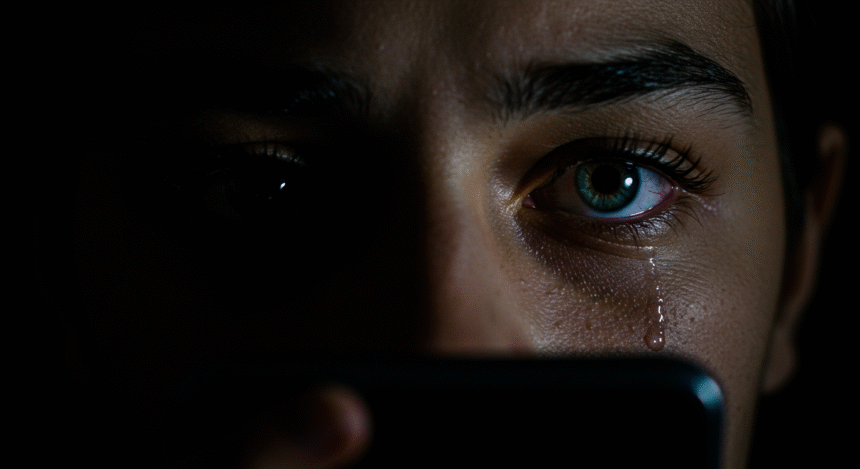New Delhi: Across India and the world, a silent epidemic is ensnaring the youth digital addiction. This is not merely a habit of spending hours on screens but a behavioral addiction that is severely damaging their mental, physical, and social health. Recent data from the World Health Organization (WHO) and numerous psychological studies paint an alarming picture, revealing that social media, gaming, and endless scrolling are hijacking the youth’s brain reward systems, increasing the risk of depression, anxiety and academic failure.
The Gravity of Digital Addiction
Digital addiction also known as Internet Addiction Disorder (IAD) is an impulse-control disorder. According to the American Psychiatric Association (APA) it is a chronic disease of the brain’s reward, motivation and memory circuits. Its primary symptoms include:
- Tolerance: The need to spend progressively more time online to achieve the same level of satisfaction.
- Withdrawal: Experiencing anxiety, irritability and sadness when offline.
Experts believe the problem isn’t just the number of hours spent on screen but how negatively this usage impacts an individual’s life.
The Science Behind the Allure: Dopamine’s Dangerous Game
The root cause of digital addiction lies in the brain’s reward system which is governed by a neurotransmitter called dopamine. According to research, every “like” on social media, every notification and every in-game reward triggers a rush of dopamine in the brain. This process functions exactly like a slot machine creating a powerful incentive for the user to repeat the behavior.
In a startling admission, former technology engineers have acknowledged that many digital platforms featuring infinite scroll and auto-play videos are intentionally designed to be addictive to maximize user engagement and corporate profits. This raises serious questions that shift the focus from personal responsibility to corporate accountability.
The Widespread Impact on Youth: A Multifaceted Crisis
The effects of digital addiction are impacting every aspect of a young person’s life, creating a multifaceted crisis.
Assault on Mental Health
Research consistently shows a strong link between excessive digital use and an increased risk of depression, anxiety, loneliness and even suicidal thoughts. A landmark 2025 study found that youth who exhibited higher addictive usage patterns had a two-to-three times greater risk of suicidal thoughts and attempts. This creates a vicious cycle where youth already suffering from anxiety turn to the digital world for relief and the excessive use in turn worsens their condition.
Neglect of Physical Health
- Sleep Disruption: The blue light emitted from screens suppresses melatonin, the sleep-regulating hormone, leading to insomnia and daytime fatigue.
- Vision Problems: Prolonged screen time causes eye strain and headaches a condition known as Computer Vision Syndrome.
- Sedentary Lifestyle: Time spent in front of screens is replacing physical activity increasing the risk of obesity and cardiovascular diseases.
Academic Decline and Erosion of Social Skills
Studies show that digital addiction has a direct negative impact on students’ academic performance. Addicted students often receive lower grades and struggle to concentrate in class. Ironically the very tools designed to “connect” us are disconnecting youth from the real world. They are losing the ability to interpret non-verbal cues like facial expressions and tone of voice making face-to-face interactions difficult.
The Shocking Statistics
According to data released by the World Health Organization (WHO) in 2024:
- 11% of adolescents in Europe, Central Asia and Canada show signs of problematic social media use.
- 12% of adolescents are at risk of problematic gaming with boys (16%) at a significantly higher risk than girls (7%).
- Another report indicates that, outside of schoolwork, teenagers spend an average of more than 7 hours per day on their phones.
The Path to a Solution: How to Regain Control
While the challenge is significant, a solution is possible. It requires a multi-pronged approach at the individual, family, and societal levels.
- Digital Detox and Boundaries: Families should establish screen-free zones (like the dinner table) and screen-free times (like an hour before bed). Parents should also model healthy digital habits themselves.
- Using Technology for Good: Utilize features like Screen Time trackers and App Limits built into smartphones. Turning off non-essential notifications and switching the phone to grayscale mode can also make it less appealing.
- Broader Responsibility: As advised by the U.S. Surgeon General, technology companies must implement “safety-by-design” features that protect youth from addictive designs. Schools should also enforce clear policies on phone use in the classroom.
- Professional Help: When self-help strategies fail and digital use severely disrupts daily life, seeking professional help is essential. Cognitive Behavioral Therapy (CBT) has been found to be particularly effective in these cases.
The conclusion is clear: the goal is not to eliminate technology but to foster a balanced and mindful relationship with it. Through awareness, intentional strategies, and a supportive ecosystem, youth can harness the benefits of the digital world while avoiding its pitfalls.















